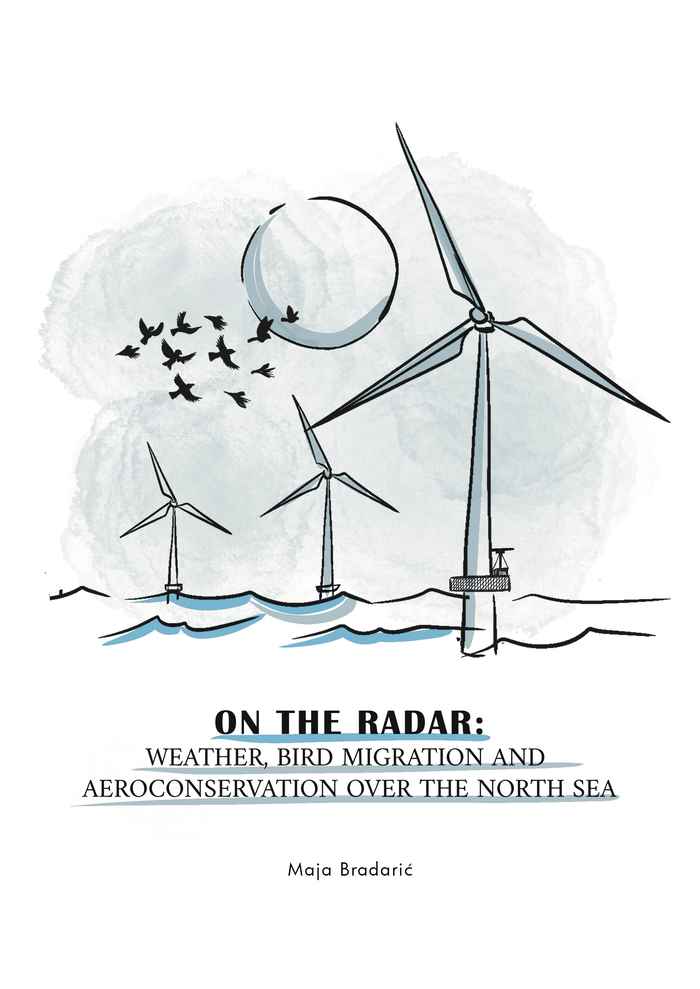PhD defence ceremony Maja Bradarić
- Date
- 13 December 2022
- Time
- 12:00
- Location
- Agnietenkapel

On the radar: weather, bird migration and aeroconservation over the North Sea
The aerosphere is increasingly altered by man-made structures, which can pose threats to animals during flight, mainly through collisions, route alteration and habitat fragmentation. Conservation measures can help decrease these negative effects, especially in areas and at times with a high abundance of animals, e.g. where movement corridors of different species overlap with substantial infrastructure development. One such area is the North Sea, an important bird migration crossroad within the East-Atlantic flyway, which is experiencing extensive offshore wind energy development. In this thesis, we aim to understand how environmental factors influence seasonal patterns of nocturnal bird migration over the southern North Sea and develop near-term forecasts that can inform offshore wind turbine curtailments during periods of intense nocturnal bird migration. With offshore bird radar data and different types of models, we explored how local and synoptic weather conditions, time of day and year influence departure decisions, seasonal migratory directions, flight altitudes and migration intensity over the southern North Sea. We observe that birds have different migratory directions in different seasons, which indicates that they might be using different routes in spring and autumn. Migration mainly occurs at low altitudes (below 300 m), except on intense bird migration nights in spring when generally positive wind assistance prompts birds to make use of higher wind speeds at higher altitudes. We reveal that high-pressure systems which bring stable weather and tailwinds drive intense bird migration across the North Sea. Using the gathered knowledge, we create a near-term bird migration forecast that can be used to inform offshore turbine curtailments necessary to reduce collision risk between migratory birds and rotating wind turbines.
